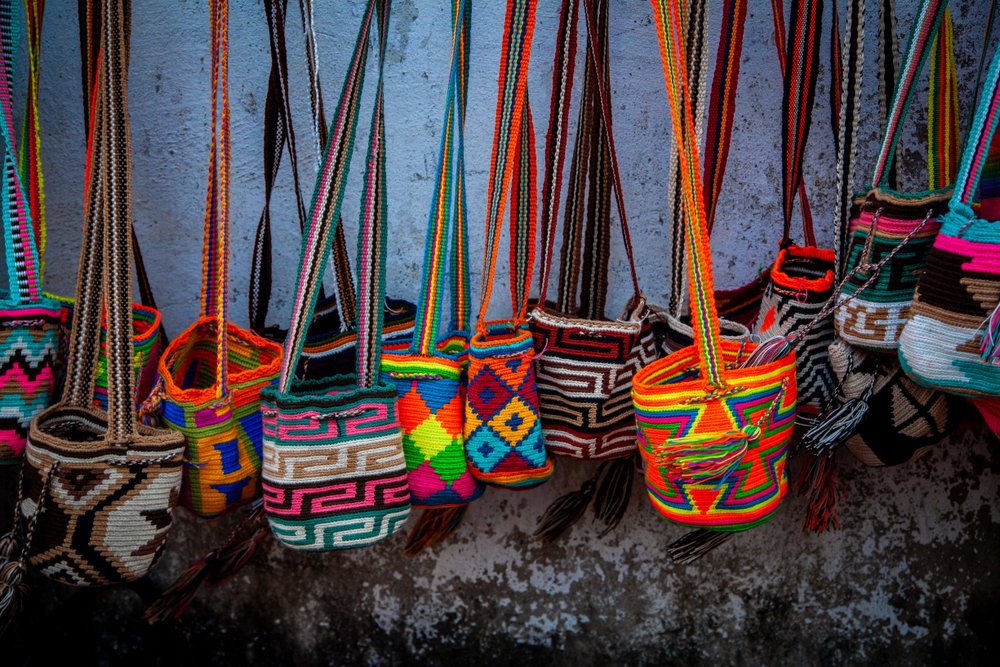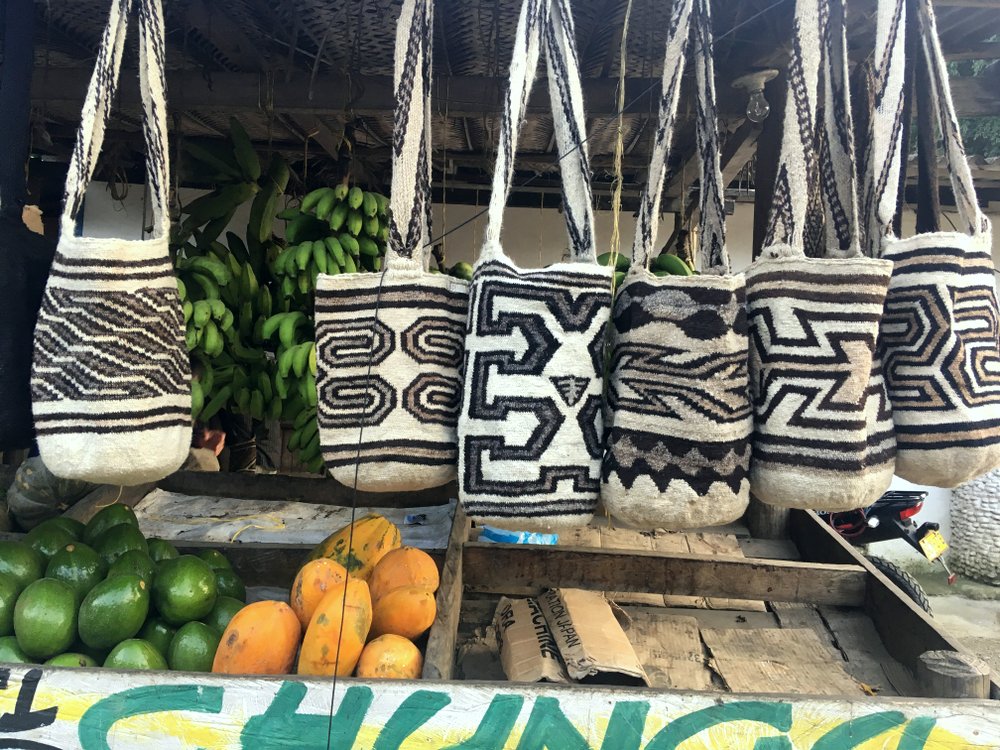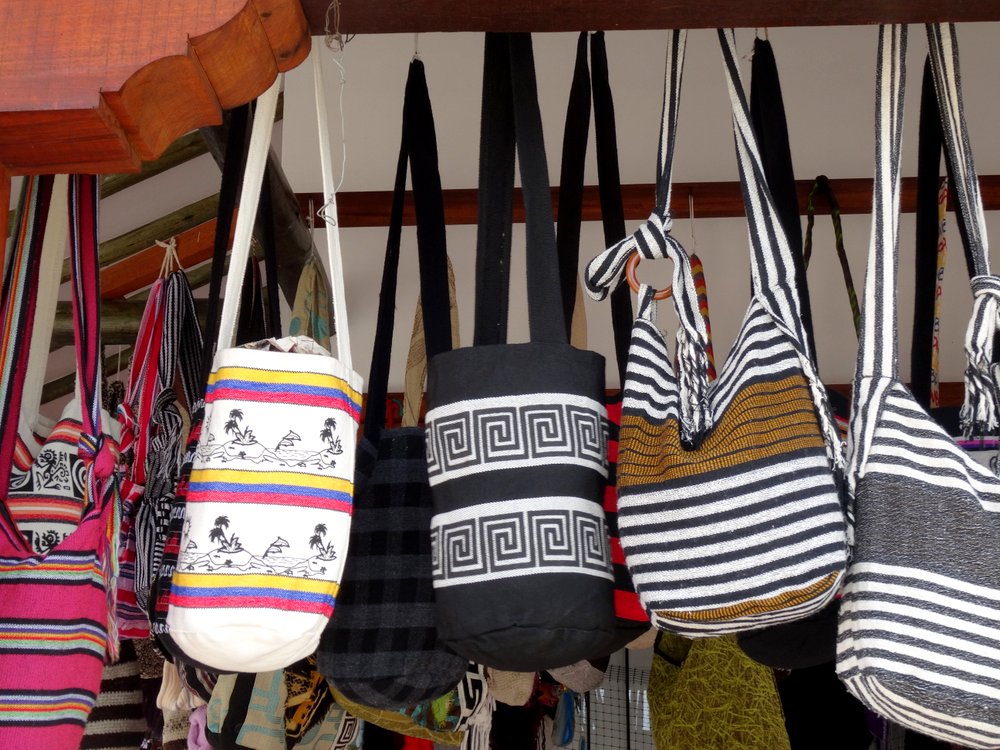Mochila bag: a treasure of Colombian indigenous tradition
When travelers visit Colombia, the mochila bag often catches their eye as a souvenir. Why would they not? Mochila bags are both beautiful and useful.
But behind the bag, there is a whole history of ancestral tradition, hard work, and craftsmanship. Keep reading to learn more about the profound meaning of a Colombian mochila bag.
Mochila bag 101
Chances are you have heard of mochila bags, as they have grown popular in mainstream fashion globally. But there is much to discover about their origins and meaning. Here are some significant facts about them:
- Mochila bags are predominantly made by indigenous Colombians, and these being exclusively women.
- They are usually crocheted using wool, cotton, and other natural fibers.
- There are various styles of the mochila bag, dependent upon the indigenous community that it comes from.
- Both men and women wear them.
- You can find them in most cities, especially in craft stores or markets. Nevertheless, it is always best to purchase them directly from the source. This way, you contribute to the livelihood of artisans and their families. Find them locally when visiting indigenous areas, or on online community sites.

The Wayuú mochila bag
The Wayúu people live in the north-eastern Guajira Peninsula, one of the most remote locations in Colombia. The department borders the Atlantic Ocean and Venezuela. The Wayúu is the country’s largest indigenous community and has adapted to the challenging environment of La Guajira Desert.
Legend has it that Wale’ Kerü, or the spider, was the one who taught the Wayúu women to weave. Since then, they have made bags, hammocks, and blankets by hand. You can easily recognize a Wayúu mochila bag by its colorful design. Their vibrant shades hail from times of colonization when the Spanish introduced acrylic thread to the community. Nowadays, they are made of industrial cotton or wool, as well as other local natural fibers.
For the Wayúu, weaving is an ancestral way of expressing their lives. Traditional designs, or kaanás, represent their interpretation of the material world and everyday life. These geometric compositions symbolize constellations, tortoise shells, or even the tracks horses leave on the sand.
There are many types of Wayúu mochilas; varying in shape, size, and traditional use. The most popular one amongst Colombians and foreigners alike is called susu. It has a round base ranging from eight to eleven inches, and a body of around thirteen inches. People carry it on their shoulders using a single strap.

The Arhuaco mochila bag
The Arhuaco people live by the Sierra Nevada de Santa Marta, the world’s tallest coastal mountain range. The Sierra is also the ancestral territory of another three indigenous communities. The Arhuaco are intimately linked to their land, which they consider sacred.
Weaving is an exclusively feminine activity for the Arhuaco people. It is how they express their view of nature and existence itself. Therefore, an Arhuaco mochila bag is a representation of each woman’s capacity to give life, and of Mother Earth.
Arhuaco mochilas are usually made of cotton, wool, or threads from the fique plant. They display earthy colors on either white or black backgrounds. Family lines have their own specific patterns. For example, the gamako design depicts a frog, – the symbol of fertility – while the aku resembles a rattlesnake skin – the symbol of time and space.

Other Colombian mochila bags
One of the most interesting facts about Colombia is its many indigenous communities. There are over a hundred of them throughout the country, many of which sell their hand-made mochilas:
- The Misak: They are located on the western slopes of the Andes Mountains.
- The Nasa: They live in the departments of Cauca, Valle del Cauca, and Huila.
- The Kankuamos: They live in the Sierra Nevada de Santa Marta, and the department of Cesar.
- The Wiwas: They are also located at the Sierra Nevada de Santa Marta.
Nowadays, non-indigenous communities are preserving the art of weaving as well in Colombia. You can find a beautiful, top-quality mochila bag in the small town of Chorrera, in the department of Atlántico.
There, both women and men make them. There is also a strong weaving tradition in San Jacinto, in the department of Bolívar.

Get yourself an ancient traditional souvenir
There are many things you can take home to remind you of your time in Colombia. However, few are as handy and meaningful as a mochila bag: a genuine token of hard work, tradition, and fashion.
If you need help or guidance with the planning process of your trip to Colombia, don´t hesitate to contact us. We have a team of travel experts looking forward to help you have the best holiday of your life.
